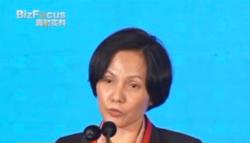China accelerates new urbanization drive to close rural-urban gap


<img src='https://news.cgtn.com/news/2024-08-09/China-accelerates-new-urbanization-drive-to-close-rural-urban-gap-1vVf3WIfZgA/img/2e17692e7c1a4cb185a7a9a03b9f7446/2e17692e7c1a4cb185a7a9a03b9f7446.jpeg' alt='The New Bund in Haikou City, south China's Hainan Province. /CFP'
Editor’s note: High-quality development is the primary task for China to build it into a modern socialist country in all respects. Following the recent conclusion of the Third Plenary Session of the 20th Communist Party of China Central Committee, CGTN is launching a series of special reports to illustrate how China is navigating its reform efforts to further unlock its economic potential and drive high-quality development.
In 2023, the eastern province of Zhejiang in China, one of the wealthiest provinces with a population of over 66 million, announced the removal of household registration restrictions in most areas, with the exception of the capital city of Hangzhou. One month later, the neighboring province of Jiangsu also announced the lifting of household registration requirements in most areas, with the exception of the cities of Nanjing and Suzhou.
In recent years, an increasing number of cities in China have relaxed and canceled requirements on household registrations, enabling the migrant population to access the same public services as registered local residents such as education, healthcare and housing purchasing, among others. The move reflects China’s resolve to further reform its household registration system to foster income equality and boost common development.
China has recently concluded the Third Plenary Session of the 20th Communist Party of China (CPC) Central Committee, during which a resolution was adopted to further deepen reforms and advance Chinese modernization. Among the various reform measures outlined, China emphasized to promoting integrated urban-rural development to narrow the disparities and promote shared prosperity and development.
Soon after the third plenary session, China’s State Council unveiled an ambitious five-year plan emphasizing the importance of advancing China’s urbanization and rural revitalization. The plan stated that the central government aims to increase the urbanization rate to around 70 percent within five years to better support high-quality economic and social development.
Data from the National Statistics Bureau shows that by the end of 2023, China’s urbanization rate reached 66.16 percent. Since its reform and opening up in 1978, China has undergone the world’s largest and fastest urbanization process. Its urban population has surged by 760.22 million, from 172.45 million in 1978 to 932.67 million in 2023, a rise surpassing the total population of Europe.
The urbanization rate of 30 to 70 percent is generally considered to be the rapid development range of urbanization. Experts say China has reached the late stage of rapid urbanization growth, and the growth rate of urbanization will slow down, but by implementing deep reforms, China’s urbanization rate will continue to improve.
<img src='https://news.cgtn.com/news/2024-08-09/China-accelerates-new-urbanization-drive-to-close-rural-urban-gap-1vVf3WIfZgA/img/16a0c0d3167947bea5e8a5a9361cb9a9/16a0c0d3167947bea5e8a5a9361cb9a9.jpeg' alt='A village in Dawu County, Xiaogan City, central China's Hubei Province, July 29, 2024. /CFP
'
Gao Guoli, director-general of the China Center for Urban Development of the National Development and Reform Commission (NDRC) said that the significant income disparity between urban and rural residents is the primary driver of urbanization. Currently, the per capita disposable income of urban residents is 2.39 times that of rural residents, indicating a strong demand and ample opportunity for agricultural workers to relocate to cities.
Furthermore, developed countries such as the U.S., Germany, and Japan have sustained rapid growth for over 10 years after reaching a 65-percent urbanization rate. “Based on their experience, China’s urbanization rate is set to continue to increase,” stated Gao. But he emphasized the necessity of further reforming China’s household registration system, and addressing the most pressing issues for rural migrant workers, such as social insurance, housing, and access to compulsory education for their children residing with them.
Established in the 1950s, China’s household registration system, hukou, classifies people as either rural or urban residents. A person’s classification is generally based on their parents’ legal residence at the time of their birth. The system was designed to control population distribution and resource allocation, ensuring balanced regional development and economic stability. However, over time, it has also led to a development gap between rural and urban areas.
In recent years, China has been implementing reforms to ease restrictions, aiming to reduce disparities between rural and urban areas and allow more people to move and access services freely. Up to now, China’s hukou system reform has seen advancements, making it easier for people to settle in urban cities. For instance, cities with population of less than three million have generally lifted restrictions, and most cities now offer equal access to public services for all residents, regardless of their hukou status.
Zheng Bei, deputy director of the NDRC, said at a news briefing last week that transferring rural migrants into citizens is the top priority of China’s new urbanization, and to achieve that, China will further deepen the hukou reform.
“The new urbanization is conducive to promoting consumption and investment and contains huge potential for domestic demand,” Zheng stated, adding that official estimates indicate that a one percentage point increase in China’s urbanization rate can lead to an annual increase in consumer demand of over 200 billion yuan and can stimulate new investment demand of one trillion yuan.






